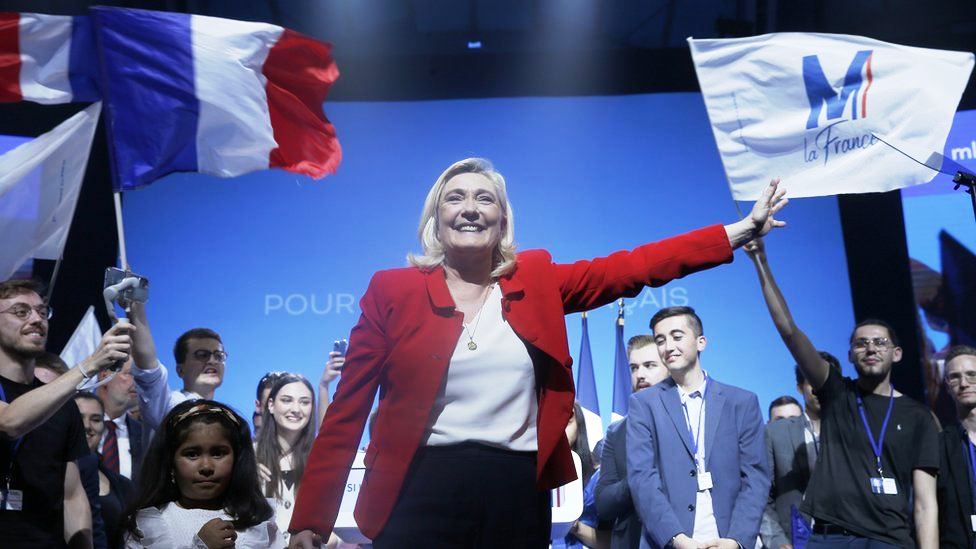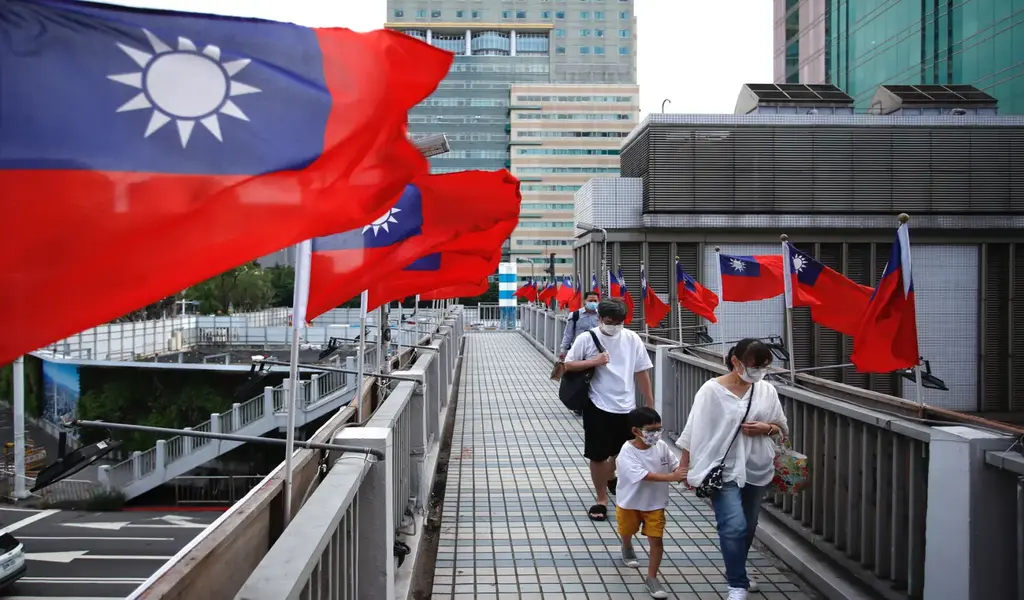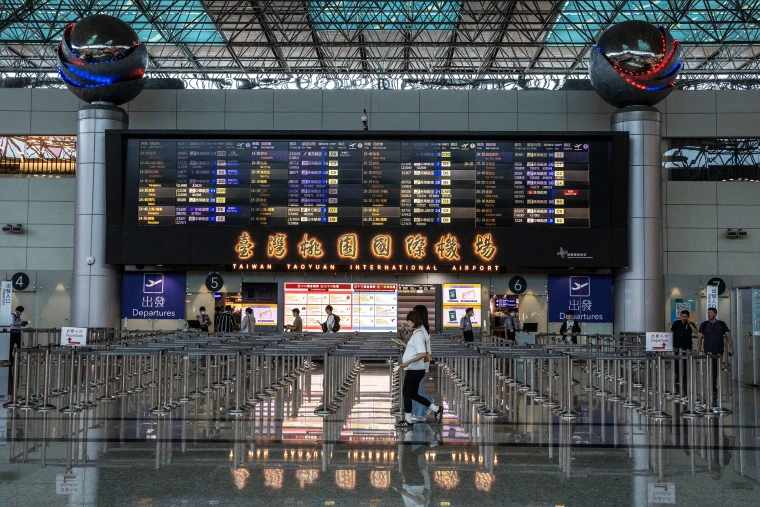World News
North Korea Fires Second Ballistic Missile Over Japan

–
SEOUL, South Korea – North Korea conducted its longest-ever test flight of a ballistic missile Friday, sending an intermediate-range weapon hurtling over U.S. ally Japan into the northern Pacific Ocean in a launch that signals both defiance to its rivals and a big technological advance.
Since President Donald Trump threatened the North with “fire and fury” in August, Pyongyang has conducted its most powerful nuclear test, threatened to send missiles into the waters around the U.S. Pacific island territory of Guam and launched two missiles of increasing range over Japan. July saw its first tests of intercontinental ballistic missiles that could strike deep into the U.S. mainland when perfected.
The growing frequency, power and confidence displayed by these tests seem to confirm what governments and outside experts have long feared: North Korea is closer than ever to its goal of building a military arsenal that can viably target both U.S. troops in Asia and the U.S. homeland. This, in turn, is meant to allow North Korea greater military freedom in the region by raising doubts in Seoul and Tokyo that Washington would risk the annihilation of a U.S. city to protect its Asian allies.
South Korea’s Joint Chiefs of Staff said the latest missile traveled about 3,700 kilometers (2,300 miles) and reached a maximum height of 770 kilometers (478 miles). Guam, which is the home of important U.S. military assets, is 3,400 kilometers (2,112 miles) away from North Korea.
North Korea’s weapons tests demonstrate that it can “turn the American empire into a sea in flames through sudden surprise attack from any region and area,” Pyongyang’s Rodong Sinmun newspaper said Friday, without mentioning the latest missile test.
South Korean President Moon Jae-in, a liberal who initially pushed for talks with North Korea, said that Pyongyang’s tests currently made dialogue “impossible.”
“The sanctions and pressure by the international community will only tighten so that North Korea has no choice but to take the path for genuine dialogue” for nuclear disarmament, Moon said. “If North Korea provokes us or our allies, we have the strength to smash the attempt at an early stage and inflict a level of damage it would be impossible to recover from.”
North Korea has repeatedly vowed to continue its weapons tests amid what it calls U.S. hostility – by which it means the presence of nearly 80,000 U.S. troops stationed in Japan and South Korea. Robust international diplomacy on the issue has been stalled for years, and there’s so far little sign that senior officials from Pyongyang and Washington might sit down to discuss ways to slow the North’s determined march toward inclusion among the world’s nuclear weapons powers.
Friday’s test, which Seoul said was the 19th launch of a ballistic missile by North Korea this year, triggered sirens and warning messages in northern Japan but caused no apparent damage to aircraft or ships. It was the second missile fired over Japan in less than a month. North Korea conducted its sixth and most powerful nuclear test on Sept. 3.
The missile was launched from Sunan, the location of Pyongyang’s international airport and the origin of the earlier missile that flew over Japan. Analysts have speculated the new test was of the same intermediate-range missile launched in that earlier flight, the Hwasong-12, and was meant to show Washington that the North can hit Guam if it chose to do so.
Despite its impressive range, the North’s missile probably still isn’t accurate enough to destroy Guam’s Andersen Air Force Base, said David Wright, a U.S. missile expert with the Union of Concerned Scientists. Such early generation missiles are often inaccurate because of guidance and control errors during the boost and re-entry phases as the warhead passes through the atmosphere late in flight, Wright said.
South Korea detected North Korean launch preparations Thursday, and President Moon ordered a live-fire ballistic missile drill if the launch happened. This allowed Seoul to fire its missiles only six minutes after the North’s launch Friday. One of the two missiles hit a sea target about 250 kilometers (155 miles) away, which was approximately the distance to Pyongyang’s Sunan, but the other failed in flight shortly after launch, South Korea’s Joint Chiefs of Staff said.
The U.N. Security Council scheduled an emergency closed-door meeting to be held Friday afternoon in New York. Trump didn’t immediately comment.
North Korea initially flight-tested the Hwasong-12 and the ICBM model Hwasong-14 at highly lofted angles to reduce their range and avoid neighboring countries.
The two launches over Japan indicate North Korea is moving toward using angles close to operational to determine whether its warheads can survive the harsh conditions of atmospheric re-entry and detonate properly.
North Korea’s August launch over Japan came weeks after it threatened to fire a salvo of Hwasong-12s toward Guam and bracket the island with “enveloping” missile fire.
North Korea has been accelerating its nuclear weapons development under leader Kim Jong Un, a third-generation dictator who has conducted four of North Korea’s six nuclear tests since taking power in 2011. The weapons being tested include hard-to-detect solid-fuel missiles designed to be launched from road mobile launchers or submarines.
The U.N. Security Council unanimously approved new sanctions earlier this week over the nuclear test, which Pyongyang claimed was a detonation of a thermonuclear weapon built for its ICBMs. The sanctions ban all textile exports and prohibit any country from authorizing new work permits for North Korean workers – two key sources of hard currency. They also prohibit North Korea from importing all natural gas liquids and condensates, and cap Pyongyang’s imports of crude oil and refined petroleum products.
North Korea’s Foreign Ministry denounced the U.N. sanctions and said the North will “redouble its efforts to increase its strength to safeguard the country’s sovereignty and right to existence.”
By KIM TONG-HYUNG and FOSTER KLUG
Associated Press
—
Associated Press writer Mari Yamaguchi in Tokyo contributed to this report.

World News
Marine Le Pen’s National Rally Wins the First Round in France 2024 Election

Exit polls in France showed that Marine Le Pen’s right-wing National Rally (RN) party made huge gains to win the first round of election on Sunday. However, the final outcome will depend on how people trade votes in the days before next week’s run-off.
Exit polls from Ipsos, Ifop, OpinionWay, and Elabe showed that the RN got about 34% of the vote. This was a big loss for President Emmanuel Macron, who called the early election after his party lost badly in the European Parliament elections earlier this month.
The National Rally (RN) easily won more votes than its opponents on the left and center, including Macron’s Together group, whose bloc was predicted to get 20.5% to 23% of the vote. Exit polls showed that the New Popular Front (NFP), a hastily put together left-wing alliance, would get about 29% of the vote.
The results of the exit polls matched what people said in polls before the election, which made Le Pen’s fans very happy. But they didn’t say for sure if the anti-immigrant, anti-EU National Rally (RN) will be able to “cohabit” with the pro-EU Macron in a government after the runoff election next Sunday.
Voters in France Angry at Macron
Many French people have looked down on the National Rally (RN) for a long time, but now it is closer to power than it has ever been. A party known for racism and antisemitism has tried to clean up its image, and it has worked. Voters are angry at Macron, the high cost of living, and rising concerns about immigration.
Fans of Marine Le Pen waved French flags and sang the Marseillaise in the northern French district of Henin-Beaumont. The crowd cheered as Le Pen said, “The French have shown they are ready to turn the page on a power that is disrespectful and destructive.”
The National Rally’s chances of taking power next week will rest on what political deals its opponents make in the next few days. Right-wing and left-wing parties used to work together to keep the National Rally (RN) out of power, but the “republican front,” which refers to this group, is less stable than ever.
If no candidate gets 50% of the vote in the first round, the top two candidates and anyone else with 12.5% of the registered voters immediately move on to the second round. The district goes to the person who gets the most votes in the runoff.
France is likely to have a record number of three-way runoffs because so many people voted on Sunday. Experts say that these are much better for the National Rally (RN) than two-way games. Almost right away on Sunday night, the horse trade began.
Macron asked people to support candidates who are “clearly republican and democratic.” Based on what he has said recently, this would rule out candidates from the National Rally (RN) and the hard-left France Unbowed (LFI) party. Leaders on the far left and the center left both asked their third-placed candidates to drop out.
Minority government
Jean-Luc Melenchon, leader of France Unbowed, said, “Our rule is simple and clear: not a single more vote for the National Rally.” But the center-right Republicans party, which split before the vote when some of its members joined the RN, didn’t say anything.
The president of the RN party, Jordan Bardella, who is 28 years old, said he was ready to be prime minister if his party gets a majority of seats. He has said he won’t try to make a minority government, and neither Macron nor the communist NFP will work with him.
“I will be a “cohabitation” Prime Minister, respectful of the constitution and of the office of President of the Republic, but uncompromising about the policies we will implement,” he said.
A few thousand anti-RN protesters met in Paris’s Republique square on Sunday night for a rally of the leftist alliance. The mood was gloomy.
Niya Khaldi, a 33-year-old teacher, said that the RN’s good results made her feel “disgust, sadness, and fear.”
“This is not how I normally act,” she said. “I think I came to reassure myself, to not feel alone.”
Election Runoff
The result on Sunday didn’t have much of an effect on the market. In early Asia-Pacific trade, the euro gained about 0.23%. Fiona Cincotta, a senior markets expert at City Index in London, said she was glad the outcome “didn’t come as a surprise.”
“Le Pen had a slightly smaller margin than some of the polls had pointed to, which may have helped the euro a little bit higher on the open,” she noted. “Now everyone is waiting for July 7 to see if the second round supports a clear majority or not. So it does feel like we’re on the edge of something.”
Some pollsters thought the RN would win the most seats in the National Assembly, but Elabe was the only one who thought the party would win all 289 seats in the run-off. Seat projections made after the first round of voting are often very wrong, and this race is no exception.
On Sunday night, Reuters reported there were no final results for the whole country yet, but they were due in the next few hours. In France, exit polls have usually been very accurate.
Voter turnout was high compared to previous parliamentary elections. This shows how passionate people are about politics after Macron made the shocking and politically risky decision to call a vote in parliament.
Mathieu Gallard, research head at Ipsos France, said that at 1500 GMT, nearly 60% of voters had turned out, up from 39.42% two years earlier. This was the highest comparable turnout since the 1986 legislative vote. It wasn’t clear when the official number of people who voted would be changed.
World News
Pakistan Seeks US Support for Counter-Terrorism Operation Azm-e-Istehkam

(CTN News) – Pakistan’s Ambassador to the United States, Masood Khan, has urged Washington to provide Pakistan with sophisticated small arms and communication equipment to ensure the success of Operation Azm-e-Istehkam, a newly approved counter-terrorism initiative in the country.
The federal government recently approved the reinvigorated national counter-terrorism drive, which comprises three components: doctrinal, societal, and operational.
Ambassador Khan noted that work on the first two phases has already begun, with the third phase set to be implemented soon.
Addressing US policymakers, scholars, and corporate leaders at the Wilson Center in Washington, Khan emphasized the importance of strong security links, enhanced intelligence cooperation, and the resumption of sales of advanced military platforms between Pakistan and the US.
He argued that this is crucial for regional security and countering the rising tide of terrorism, which also threatens the interests of the US and its allies.
“Pakistan has launched Azm-i-Istehkam […] to oppose and dismantle terrorist networks. For that, we need sophisticated small arms and communication equipment,” said Ambassador Khan.
Pakistan–United States relations
The ambassador observed that the prospects of Pakistan-United States relations were bright, stating that the two countries “share values, our security and economic interests are interwoven, and it is the aspiration of our two peoples that strengthens our ties.”
He invited US investors and businesses to explore Pakistan’s potential in terms of demographic dividend, technological advancements, and market opportunities.
Khan also suggested that the US should consider Pakistan as a partner in its diplomatic efforts in Kabul and collaborate on counterterrorism and the rights of women and girls in Afghanistan.
He stressed that the bilateral relationship should be based on ground realities and not be hindered by a few issues.
“We should not base our engagement on the incongruity of expectations.
Our ties should be anchored in ground realities, even as we aim for stronger security and economic partnerships. Secondly, one or two issues should not hold the entire relationship hostage,” said the ambassador.
World News
China Urges Taiwanese to Visit Mainland ‘Without Worry’ Despite Execution Threat

China has reassured Taiwanese citizens that they can visit the mainland “without the slightest worry”, despite Taiwan raising its travel alert to the second-highest level in response to Beijing’s new judicial guidelines targeting supporters of Taiwanese independence.
Last week, China published guidelines that could impose the death penalty for “particularly serious” cases involving “diehard” advocates of Taiwanese independence.
In response, Taiwan’s government urged the public to avoid “unnecessary travel” to mainland China and Hong Kong, and raised its travel warning to the “orange” level.
However, Zhu Fenglian, a spokeswoman for a Chinese body overseeing Taiwan affairs, stated that the new directives are “aimed solely at the very small number of supporters of ‘Taiwan independence’, who are engaged in malicious acts and utterances”.
She emphasized that “the vast majority of Taiwan compatriots involved in cross-strait exchanges and cooperation do not need to have the slightest worry when they come to or leave mainland China”.
“They can arrive in high spirits and leave fully satisfied with their stay,” Zhu added.

What’s Behind The China-Taiwan Tensions?
The tensions stem from the longstanding dispute over Taiwan’s status. Mainland China claims Taiwan as part of its territory and has refused to rule out using force to bring the democratic island under its control, while Taiwan sees itself as a sovereign state.
Beijing has not conducted top-level communications with Taipei since 2016, when the Democratic Progressive Party’s Tsai Ing-wen became Taiwan’s leader. China has since branded her successor, President Lai Ching-te, a “dangerous separatist”.
“The DPP authorities have fabricated excuses to deceive the people on the island and incite confrontation and opposition,” Zhu said in her statement.
Despite the political tensions, many Taiwanese continue to travel to mainland China for work, study, or business.
-

 News3 years ago
News3 years agoLet’s Know About Ultra High Net Worth Individual
-
Entertainment2 years ago
Mabelle Prior: The Voice of Hope, Resilience, and Diversity Inspiring Generations
-

 Health4 years ago
Health4 years agoHow Much Ivermectin Should You Take?
-

 Tech2 years ago
Tech2 years agoTop Forex Brokers of 2023: Reviews and Analysis for Successful Trading
-

 Lifestyles3 years ago
Lifestyles3 years agoAries Soulmate Signs
-

 Movies2 years ago
Movies2 years agoWhat Should I Do If Disney Plus Keeps Logging Me Out of TV?
-

 Health3 years ago
Health3 years agoCan I Buy Ivermectin Without A Prescription in the USA?
-

 Learning3 years ago
Learning3 years agoVirtual Numbers: What Are They For?